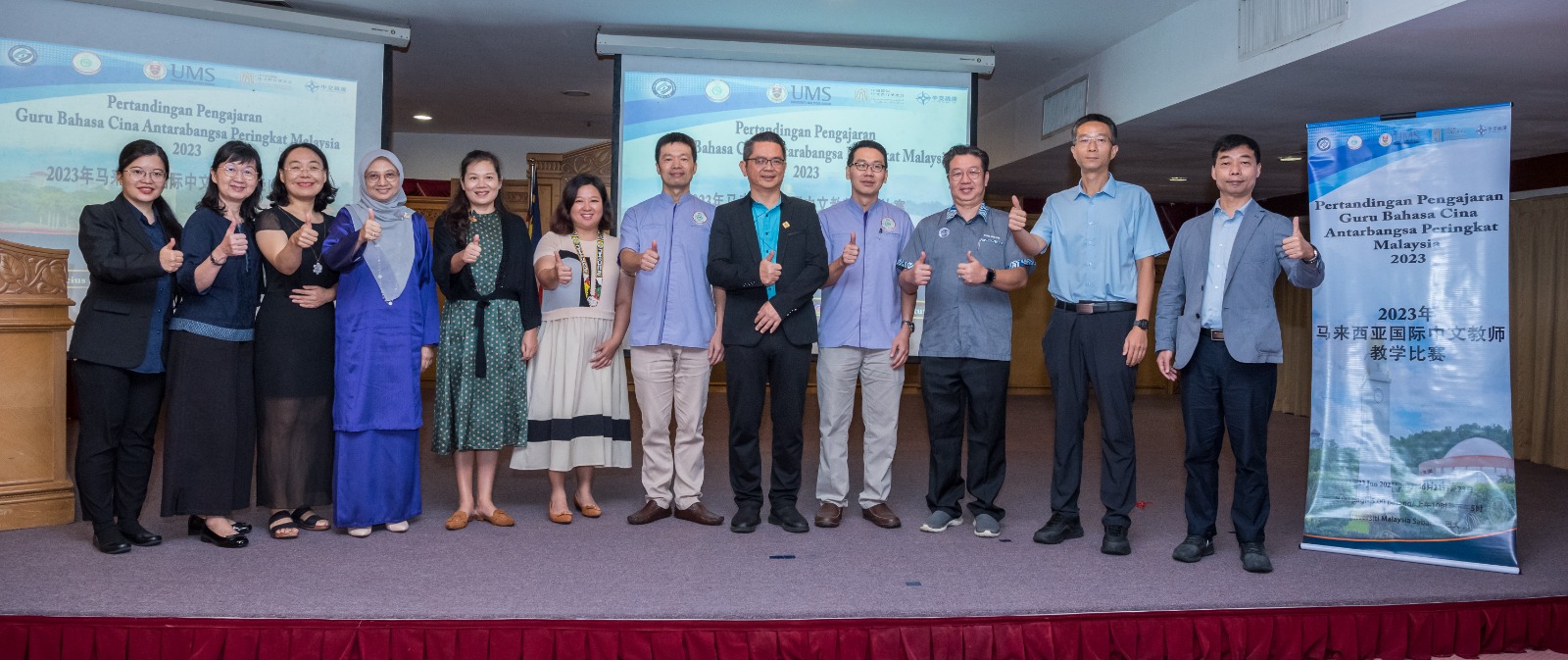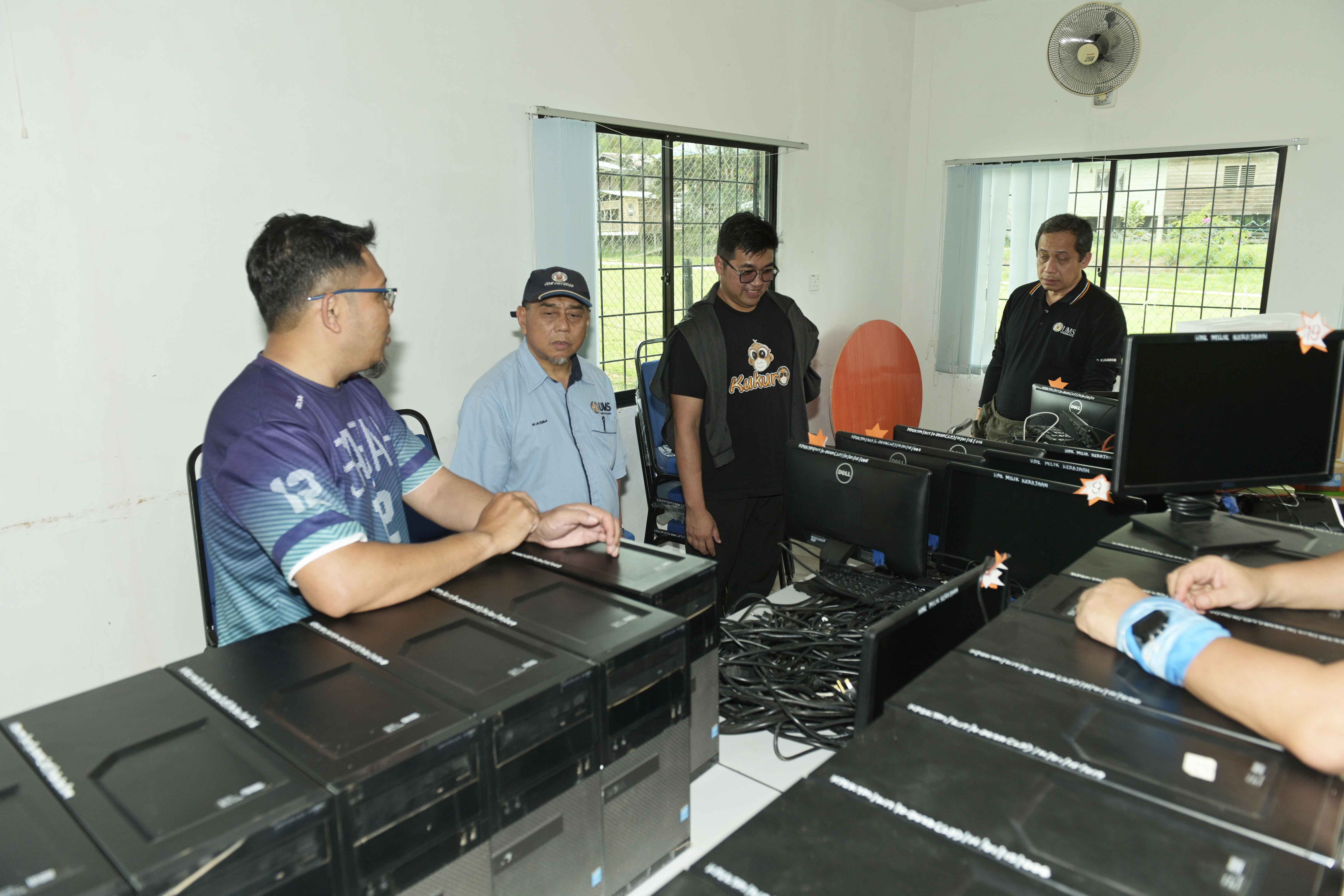 Universiti Malaysia Sabah (UMS) berhasrat untuk menjadikan kampusnya sebagai kampus tanpa tunai (Cashless Campus).
Universiti Malaysia Sabah (UMS) berhasrat untuk menjadikan kampusnya sebagai kampus tanpa tunai (Cashless Campus).
Naib Canselor UMS, Prof. Datuk Dr. Kasim Hj Mansor berkata, UMS telah melaksanakan persekitaran bayaran tanpa tunai semenjak tahun 2019 sebagai menyokong hasrat Kementerian Pendidikan Tinggi bagi transformasi ekosistem transaksi kewangan di institusi pengajian tinggi (IPT) ke arah kampus tanpa tunai.
“Pelaksanaan program tanpa tunai ini adalah seiring dengan perkembangan gaya hidup digital serta memberi manfaat dengan melakukan transaksi yang ringkas dan cepat untuk segala urus niaga dalam kampus.
“Selain itu, usaha ini juga mampu mengubah tingkah laku berbelanja pelajar dan kakitangan yang lebih selamat dan membudayakan penyimpanan rekod urus niaga secara lebih teratur,” katanya.
Beliau berkata demikian dalam ucapan sempena Majlis Penyampaian Hadiah Kempen Cashless Campus anjuran UMS dan Payment Network Malaysia Sdn. Bhd. (PayNet) di Bangunan Canselori UMS.
Katanya lagi, berdasarkan semakan, peratusan terimaan bagi UMS secara tanpa tunai telah mencapai hampir 100 peratus.
“Namun begitu, persekitaran terimaan tanpa tunai dalam kalangan peniaga dalam premis universiti masih perlu ditingkatkan.
“Justeru itu, sokongan dan tajaan yang diberikan oleh pihak PayNet dalam program kampus tanpa tunai UMS sepanjang tahun 2022 amat dihargai, kerana penganjuran kempen-kempen yang telah dilaksanakan telah meningkatkan kefahaman dan mempromosikan bayaran secara tanpa tunai dalam kalangan warga universiti.
“Selain itu, usaha ini juga mampu mendidik warga universiti bahawa transaksi tanpa tunai adalah kaedah bayaran yang sepatutnya menjadi pilihan kerana lebih mudah, cepat dan selamat tanpa perlu membawa atau mengeluarkan wang tunai dari ATM,” kata Kasim.
Beliau turut merakamkan penghargaan kepada Jabatan Bendahari atas penganjuran kempen tersebut, serta seluruh pihak yang terlibat seperti Jabatan Hal Ehwal Pelajar, Majlis Perwakilan Pelajar serta para peniaga dalam kampus UMS.
Terdahulu, Bendahari UMS, Badrul Hisham Ismail memberitahu, pada tahun 2022, pihak Paynet telah menaja dua kempen tanpa tunai di UMS, iaitu “Kempen MyDebit, FPX, JomPAY and DUitNow QR Campaign at UMS” dan “Kempen Cashless Campus sempena Program Pendigitalan Kampus Siri 1”.
“Kempen ini menawarkan hadiah-hadiah menarik untuk para pembayar bertuah yang membuat pembayaran menggunakan MyDebit, DuitNow QR, FPX atau JomPAY serta para pemenang yang mengikuti aktiviti pembayaran tanpa tunai yang dijalankan dalam tempoh kempen tersebut.
“Pihak Majlis Perwakilan Pelajar UMS juga turut terlibat dalam menjayakan aktiviti kampus tanpa tunai termasuklah mengadakan pertandingan serta hadiah bertuah kepada pembayar menggunakan mod pembayaran tanpa tunai kepada peniaga di kampus serta menganjurkan Karnival Cashless pada bulan Disember 2022,” katanya.
Beliau turut mengalu-alukan hasrat pihak PayNet untuk meneruskan tajaan bagi kempen Cashless Campus sempena Program Pendigitalan Kampus Siri 2 di UMS yang akan dilaksanakan pada tahun ini, serta berharap agar kerjasama seumpama akan berterusan pada masa hadapan.
Pada majlis itu, Kasim bersama Ketua Sektor Pendidikan Bahagian Pendigitalan Kerajaan, PayNet, Zurianty Sudin telah menyampaikan hadiah kepada para pemenang kempen tersebut, serta menyempurnakan perasmian ‘Mangan Cafe’, kafeteria yang bertempat di Bangunan Canselori UMS.
Hadir sama pada majlis tersebut Timbalan Naib Canselor (Hal Ehwal Pelajar dan Alumni), Prof. Madya Dr. Raman Noordin; Pendaftar UMS, Luqman Ridha Anwar; dan Ketua Pustakawan UMS, Md. Sazali Md. Salleh.



 Universiti Malaysia Sabah (UMS) melalui Institut Biologi Tropika dan Pemuliharaan (IBTP) terus memperkasakan usaha dalam melibatkan semua pihak termasuk industri dan komuniti dalam aspek pemuliharaan biodiversiti.
Universiti Malaysia Sabah (UMS) melalui Institut Biologi Tropika dan Pemuliharaan (IBTP) terus memperkasakan usaha dalam melibatkan semua pihak termasuk industri dan komuniti dalam aspek pemuliharaan biodiversiti. Universiti Malaysia Sabah (UMS) dipilih sebagai tuan rumah bagi penganjuran pertama Pertandingan Pengajaran Guru Bahasa Cina Antarabangsa Peringkat Malaysia 2023.
Universiti Malaysia Sabah (UMS) dipilih sebagai tuan rumah bagi penganjuran pertama Pertandingan Pengajaran Guru Bahasa Cina Antarabangsa Peringkat Malaysia 2023. Program Rentas Borneo 2023 yang berlangsung di Kampung Long Pasia, Sipitang selama lima hari melibatkan 10 projek pemindahan ilmu berjaya dilaksanakan warga Universiti Malaysia Sabah (UMS), baru-baru ini.
Program Rentas Borneo 2023 yang berlangsung di Kampung Long Pasia, Sipitang selama lima hari melibatkan 10 projek pemindahan ilmu berjaya dilaksanakan warga Universiti Malaysia Sabah (UMS), baru-baru ini. Hampir 200 pengamal pendidikan awal kanak-kanak di seluruh Malaysia menyertai Konvensyen Kebangsaan Asuhan dan Didikan Kanak-kanak TASKA 2023 yang berlangsung di sini, baru-baru ini.
Hampir 200 pengamal pendidikan awal kanak-kanak di seluruh Malaysia menyertai Konvensyen Kebangsaan Asuhan dan Didikan Kanak-kanak TASKA 2023 yang berlangsung di sini, baru-baru ini.